
Fresh Fruit Storage Tips For Your Refrigerator & Counter
{Includes Free Printable Chart}
Here are tips for fresh fruit storage on your counter, and in the refrigerator, to keep it fresh and tasting good.
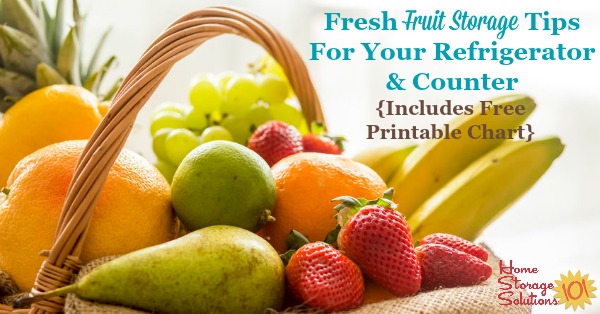
A free printable storage chart is also included below, after the tips are provided.
Many of us enjoy purchasing fresh fruit for meals and snacks, because it tastes delicious and is good for us.
However, fresh fruit, like any produce, is expensive, so you want to make sure it tastes great when you eat it, and that it is stored correctly so it doesn't go to waste before it can be enjoyed.
When you store fruit correctly you can have the knowledge to help the fruit ripen, so it tastes amazing, even if when you buy it it's not quite ripe yet, how to keep it then from rotting or spoiling too quickly, and finally, how quickly you need to eat it to make sure it doesn't go to waste.
Where To Store: The Refrigerator Or On The Counter?
Once you come home from the Farmer's Market or grocery store with your fresh fruits the first thing you've got to decide is where you'll put the food away, such as on the counter at room-temperature, or inside your refrigerator.
Below I've got a chart that will help you make this decision for most of the major types of fruit.
However, first let's understand some general rules about storing fresh fruits, so you can understand the chart more easily.
Cool Air Slows Down Both Ripening & Deterioration
The first of these general rules is that cool air, such as the air found in the refrigerator, slow down the process of ripening the fruit, and then also slows down how quickly the fruit deteriorates after ripening.
That means, to the extent that your fruit is already ripe, generally you'll want to eat it quickly or store it in the refrigerator so that it doesn't pass the peak of ripeness and instead turn mushy or rotten before you've had a chance to enjoy it.
Simulatenously, when you first buy your fruit, if it's not yet ripe, you may not want to put it in the refrigerator right away, but instead leave it at room temperature to ripen a bit more first, because placing it in the refrigerator too soon will halt the ripening process.
When In Doubt Put It Into The Refrigerator With A Few Exceptions
The second general rule is that cut fruits should be kept in the refrigerator, and even most whole fruits are better stored there, with just a few exceptions, so if in doubt adding your fresh fruit to the refrigerator is the best choice.
The major exceptions to this rule about fruits being stored in the refrigerator are bananas, whose peels blacken in the fridge, as well as tomatoes (yes, tomatoes are a fruit!).
In addition, there are some fruits which can be kept out, if you and your family enjoy them at room temperature, although typically they'll need to be eaten more quickly if stored on the counter, such as apples, and citrus fruits, such as oranges, lemons and limes.
That's why you see the typical fruit bowl in someone's kitchen contains only a few fruits, including the ones listed above.
Make Sure You're Putting Your Fruit In The Right Place Inside Your Refrigerator
Finally, the third general rule is that not everywhere in your refrigerator is equally as good to store fruits. Instead, the amount of humidity that certain fruits require is different than what is best in the more open shelves of your fridge.
That's why refrigerators typically come with some drawers, also often called crispers, where you place produce.
To learn more about what these crisper drawers do, and how much humidity various types of produce need, make sure to check out the refrigerator storage chart here on the site.
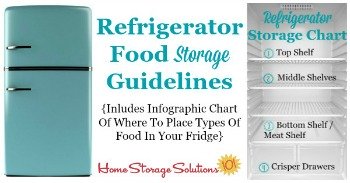
Why Each Type Of Fruit Should Be Treated Differently When Deciding On Storage
As much as I like general rules, fruits are also different in various respects.
For example, some fruits are more sensitive to moisture than others, plus some fruits produce more types of gasses which help ripen (or rotten) the fruit around them (typically ethylene gas).
That means that while you should keep the general rules in mind, you also need to remember some quirks about the individual types of fruits you enjoy eating, and how they should be stored.
The chart below provides you with more information about this, for many of the most common types of fruits.
How Long Various Fruits Will Last In Your Refrigerator Or On Counter
Here's the chart which tells you how long various fruits will last in your fridge, typically, or on the counter, as well as special storage instructions unique to that type of fruit. (The printable version of the chart is below, so scroll down to find it!)
| Fruit | Storage Time In Fridge | Additional Notes |
|---|---|---|
| Apples | 1 month | Can also be stored at room temperature. |
| Apricots | 5 days | See footnote 1 |
| Avocados | 5 days (or less) | See footnotes 1 and 2. |
| Bananas | n/a | Keep at room temperature, depending on ripeness will last 3-6 days. See footnote 3. |
| Berries | 3 days | Very perishable, store unwashed and dry, in shallow container for good air circulation. |
| Cherries | 3 days | Very perishable, store unwashed and dry, in shallow container for good air circulation. |
| Cranberries | 4 weeks | Spoil quickly at room temperature. |
| Grapefruit | 2 weeks | Can also be stored at room temperature for about a week. |
| Grapes | 5 days | Store unwashed and dry, in perforated bag for good air circulation. |
| Kiwi | 2 weeks | See footnote 1. May last up to a week on counter, but muse be used soon after ripening. |
| Lemons and limes | 2 weeks | May also store at room temperature, but use within 3-4 days. Keep out of bright sunlight. |
| Mangoes | 2-3 days | See footnote 1 and 4. Green mangoes will ripen within a week at room temperature. |
| Melons | 5 days (whole), or 3 days (cut) | Very perishable. See footnote 1 and 5. |
| Nectarines | 5 days | See footnote 1 and 4. Ripening at room temperature can take 2-3 days. |
| Oranges | 2 weeks | Can also be stored at room temperature for about a week. |
| Peaches | 5 days | See footnote 1 and 4. Ripening at room temperature can take 2-3 days. |
| Pears | 5 days | See footnote 1. Ripening at room temperature may take 2-3 days. |
| Pineapple | 4 days | Eat soon after purchase. Store in perforated bag in refrigerator. |
| Plums | 5 days | See footnote 1 and 4. |
| Tomatoes | 1 week | Leave at room temperature to ripen, and do not refrigerate unless going to go bad. See footnote 6. |
Additional footnotes from fruit storage chart are below.
Footnote 1: May need to allow to ripen at room temperature before refrigerating.
Footnote 2: (For avocados) Ripening at room temperature can take between 4-7 days. Speed ripening by placing in paper bag for 2-4 days at room temperature.
Footnote 3: (For bananas) Bananas placed in refrigerator have skin turn black, but the fruit is still edible.
Footnote 4: (For mangoes, nectarines, peaches, and plums) To speed ripening place in paper bag out of direct sunlight.
Footnote 5: (For melons) To speed ripening place in pierced paper bag.
Footnote 6: (For tomatoes) Use within one week of sitting on the counter, and quickly once ripe.
Printable Fresh Fruit Storage Chart {Cheat Sheet}
Here is the printable version of the fresh fruit storage chart, which answers the question of how long will certain fruits last in the refrigerator, or on the counter, when you use the best storage methods.
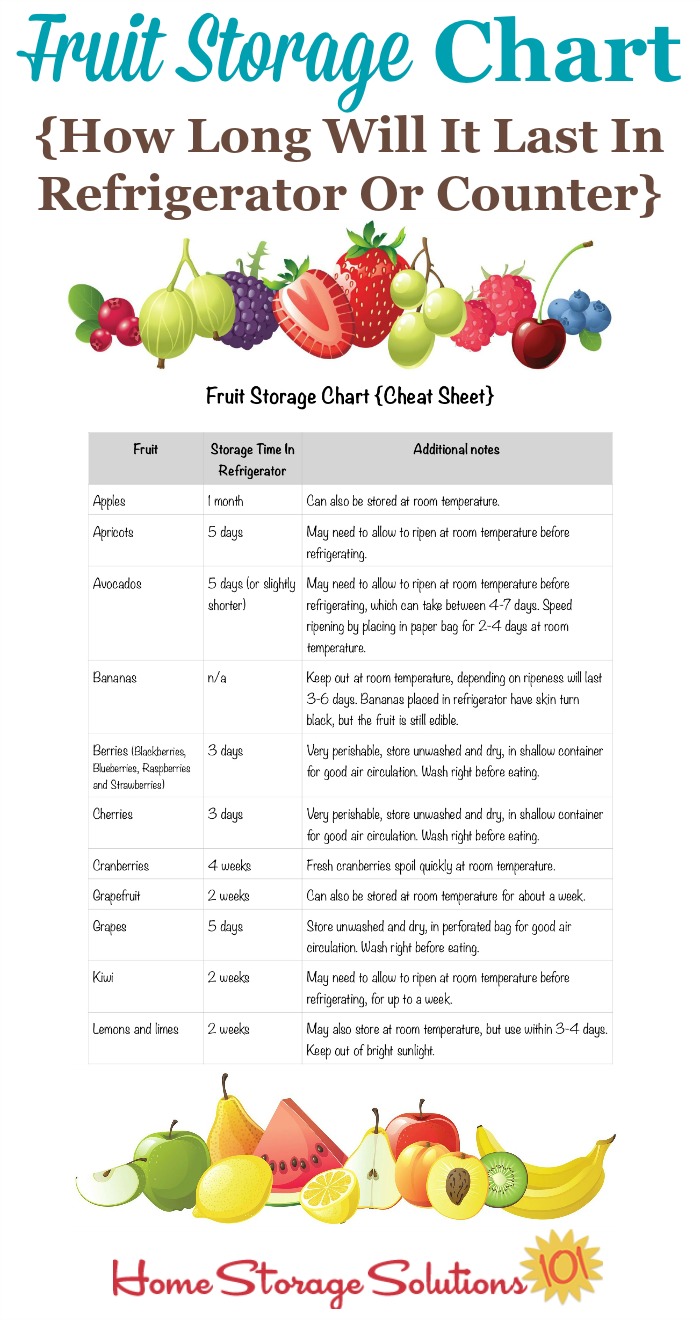
Click here to get your Cheat Sheet (2 pages) (opens into PDF)
I've created a printable version of this information for you so it is easier for you to reference when organizing your refrigerator as part of the Organizing Refrigerator & Freezer Challenge.
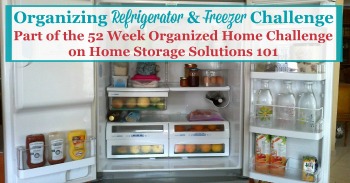
Do You Want To Know How To Store Fresh Vegetables Too?
I've written a companion article to this one, all about tips for storing fresh vegetables in your refrigerator, counters and pantry. You can check it out here, as well as get a free printable fresh vegetable storage chart.

Other Printable Forms You May Like
Here are some additional printable forms about food storage, including other cheat sheets with storage times for food, that you may find helpful.
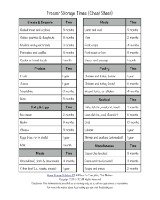 Freezer Storage Times {Cheat Sheet} |
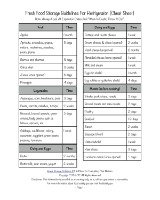 Refrigerated Food Storage Guidelines {Cheat Sheet} |
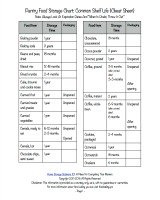 Pantry Food Storage Chart {Cheat Sheet} |

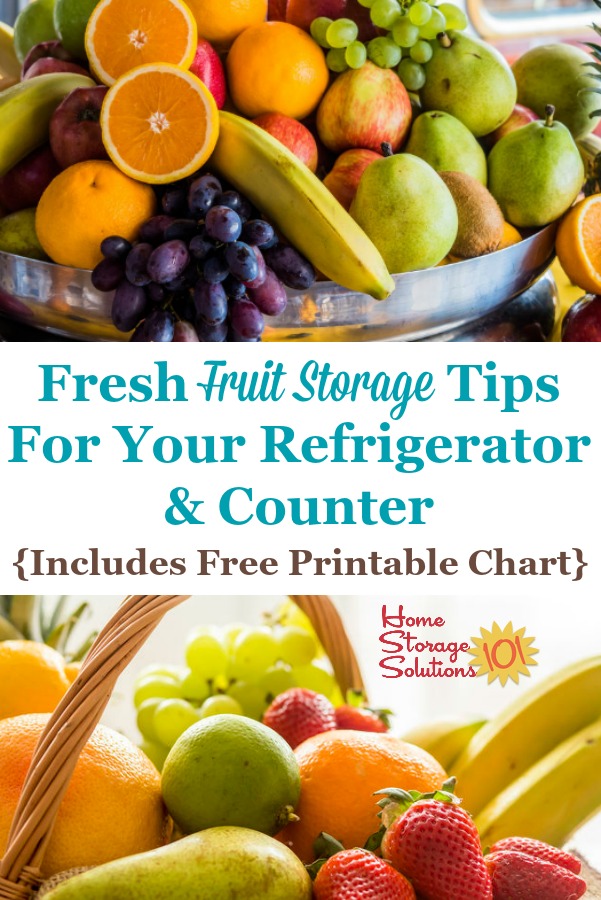











Share Your Comments, Tips & Ideas
I would love to hear from you, sharing your thoughts, questions, or ideas about this topic, so leave me a comment below. I try to always respond back!